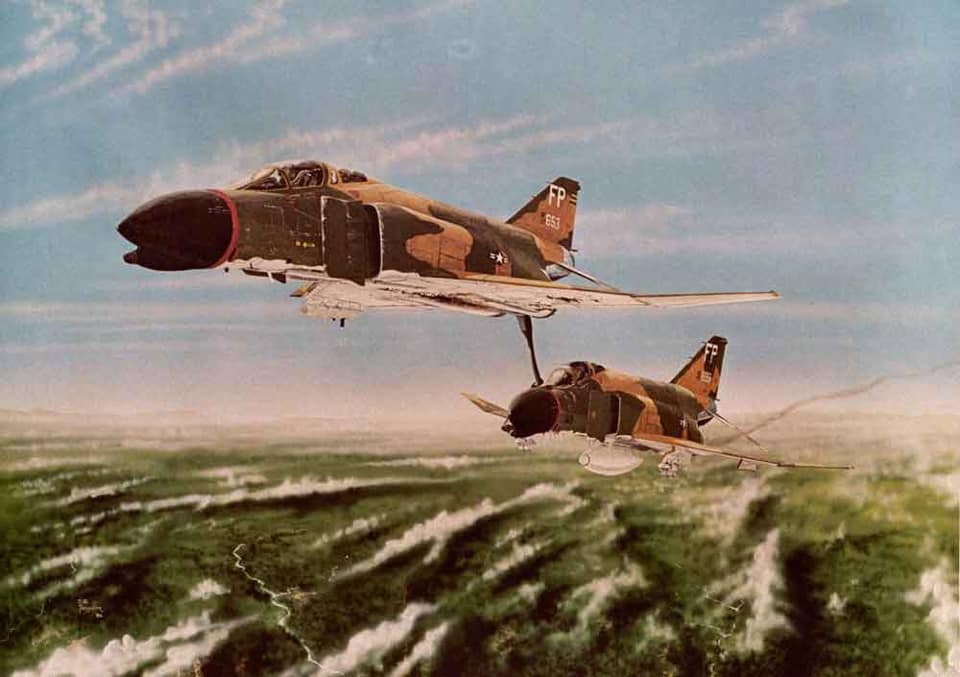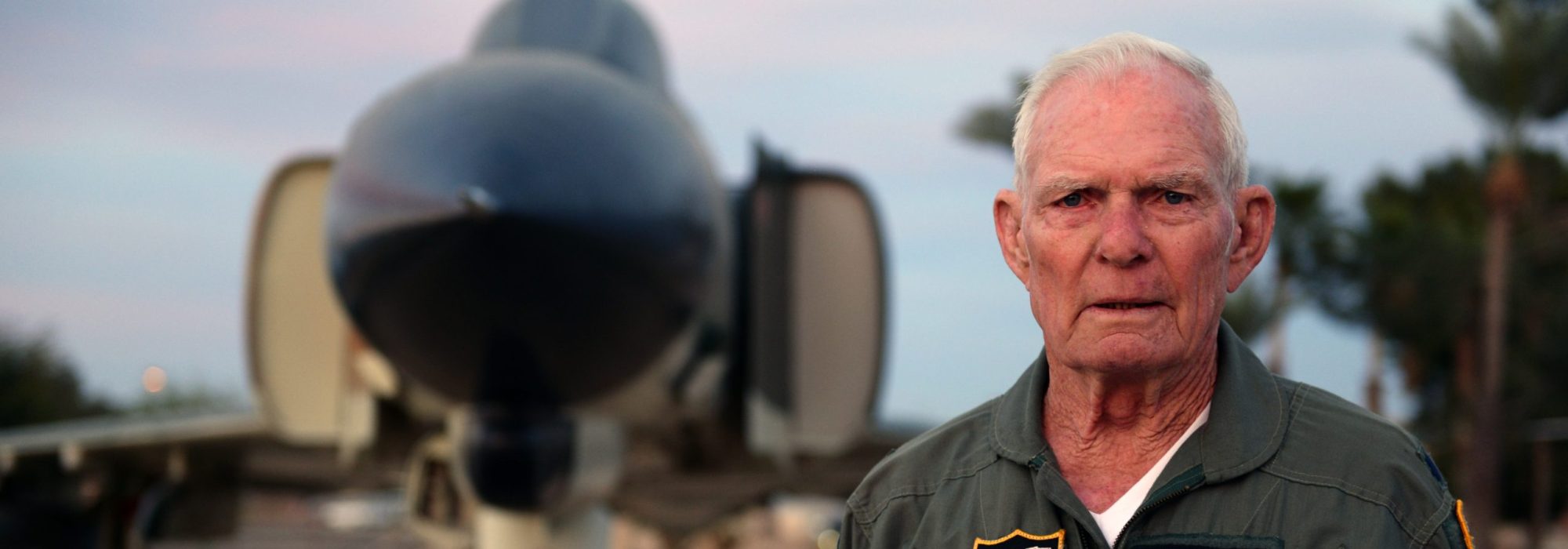Retired Lt. Col. Bob Pardo, a decorated Air Force fighter pilot and Vietnam veteran, died Dec. 5, 2023, in College Station, Texas. He was 89. In his memory, Air & Space Forces Magazine is republishing this October 1996 article recounting the story of “Pardo’s Push,” which has become Air Force legend.
There are pilots who fly fighters, and there are fighter pilots. Retired Lt. Col. Bob Pardo is one of the latter. When he’s not flying corporate jets in Colorado, he’s doing aerobatics in single-engine planes with fighter pilot friends.
Of the 132 missions he flew in Vietnam with the 8th Tactical Fighter Wing, the most memorable is that of March 10, 1967, when he and his weapon system officer, Lt. Steve Wayne, went against steel mills near Hanoi. In their flight was Capt. Earl Aman and his “Guy in Back,” Lt. Bob Houghton. The Hanoi area was the most heavily defended in the history of air warfare, and on that day enemy ground fire was the heaviest Captain Pardo had seen in his many trips downtown.
Before they reached the target, Captain Aman’s F-4 was hit, but he was able to stay with the formation. As they were rolling in on the target, anti-aircraft gunners found Aman again. His aircraft began to leak fuel rapidly. Pardo also was hit but was able to continue with the strike, though his F-4, too, was leaking fuel. By the time they were above 20,000 feet on their way out, it was obvious that Aman did not have enough fuel to reach Laos, where he and Houghton could bail out with a reasonable chance of being rescued. If they punched out over North Vietnam, they were almost certain to be captured and either killed or sent to reserved accommodations at the Hanoi Hilton.
Bob Pardo, on the other hand, probably had enough fuel, with careful management, to reach a tanker, leaving Aman and Houghton to an uncertain fate. That was not Pardo’s way. “How can you fly off and leave someone you just fought a battle with?” asks Pardo. “The thought never occurred to me.” He would stay as long as Aman’s fuel lasted, then think of some way to get the two men to safety.
Pardo didn’t have long to think about it. While they were still over North Vietnam, Aman flamed out. What to do now? Desperate situations demand desperate measures. Pardo decided to do something that, to his knowledge, had not been done before. He would push Aman’s F-4 to Laos. (In 1952, during the Korean War while Pardo was still in high school, fighter ace Robbie Risner had pushed his wingman out of North Korea in an F-86. Pilots then were ordered to refrain from attempting the hazardous act again, and the event, which Risner hardly ever mentioned, faded from memory.)
With delicate touch, Pardo brought the nose of his damaged aircraft into contact with Aman’s F-4, now plunging toward the Laotian jungle at 250 knots. He soon found that the pointed nose of an F-4 was not designed for pushing anything more solid than air. After several failed attempts, Bob Pardo came up with a brilliant idea. He told Aman to drop his tailhook. He then maneuvered his windscreen against the tailhook. It worked, but about every thirty seconds Pardo would lose contact because of turbulence, then back off and come in again. It was an extraordinary job of flying. Aman’s rate of descent was reduced to 1,500 feet per minute.
Their problems were not over. Pardo’s left engine caught fire. He shut it down, then restarted it, and again it caught fire. Never mind that. He would be at zero fuel in 10 minutes anyway. It was time for everyone to hit the silk. Aman and Houghton bailed out at 6,000 feet, followed shortly by Wayne and Pardo. Once on the ground, Aman and Houghton were pursued by the enemy but managed to elude them. All four men were picked up by rescue helicopters—Pardo, who bailed out last, was rescued 45 minutes after the others—and returned to their base at Udorn RTAB, Thailand.

Bob Pardo was an instant hero to the other pilots but not to some higher-echelon accountants, who threatened to bring charges against him for losing an expensive airplane. Good judgment prevailed, and the charges were dropped. Two decades later, he and Steve Wayne each were awarded the Silver Star for what came to be known as Pardo’s Push, immortalized in a striking painting by aviation artist Steve Ferguson.
Bob Pardo still is concerned for the well-being of his fellow airmen. When he learned that Earl Aman, now a retired lieutenant colonel, is suffering from Lou Gehrig’s disease and had lost his voice and mobility, he founded the Earl Aman Foundation, which has raised enough money to buy Aman a voice synthesizer, a motorized wheelchair, and a computer. The foundation now is working to buy a van for Aman and has expanded its work to include members of the Red River Valley Fighter Pilots Association. In peace or war, says Bob Pardo, “if one of us gets in trouble, everyone else gets together to help.”
Published October 1996. For presentation on this web site, some Valor articles have been amended for accuracy.
